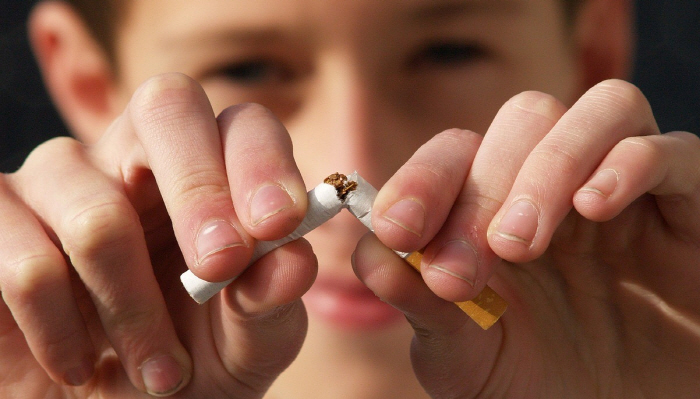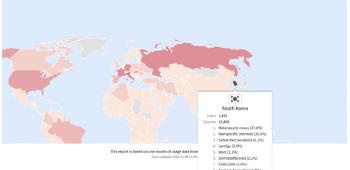First Step for Lung Health Stop Smoking... If you quit at the age of 35-44, your life will be extended by 9 years
May 12, 2025
|
First of all, cigarette smoke contains thousands of harmful substances, many of which are carcinogens. Smoking is a major cause of several lung diseases such as lung cancer, chronic obstructive pulmonary disease (COPD), and asthma exacerbation.
In particular, smoking destroys the alveoli, weakening the function of oxygen exchange, and can lead to breathing difficulties and life threats, said Hwang In-kyung, head of the Department of Respiratory Medicine at Seonam Hospital in Seoul. Second-hand smoking also has an adverse effect on lung health as much as direct smoking, so non-smokers should pay attention to their surroundings," he stressed.
Tobacco was first introduced to Western society by Columbus in 1492, and it was introduced to Korea from Japan during the Imjin War in 1592. A full-fledged anti-smoking campaign for lung health began in the mid-20th century, leading to the first insertion of warning phrases into cigarettes in 1965. Currently, in addition to cigarettes that are commonly encountered, there are various types such as cigarette coupons, cigarette sticks, chewing cigarettes, and cigarettes that smell with the nose. In recent years, e-cigarettes are often used as smoking cessation supplements, but e-cigarettes can cause nicotine dependence and are not recommended because they contain harmful ingredients like regular cigarettes.
Quitting smoking is the most effective and immediate way to protect lung health. When you start smoking cessation, your heart rate and blood pressure are close to normal after 20 minutes, and your blood carbon monoxide concentration is restored to normal after 12 hours. After 2 weeks to 3 months, lung function improves, shortness of breath when walking or exercising, and after 1 year, the risk of heart disease is halved. After 5 to 10 years, the risk of various cancers, including lung cancer, approaches the non-smoker level.
Smoking is beneficial at any time it starts, and the effect appears immediately after smoking cessation. If you quit smoking at the age of 25-34, your survival period will be 10 years longer than when you smoke, 9 years if you quit smoking at the age of 35-44, 6 years if you quit smoking at the age of 45-54, and 4 years if you quit smoking at the age of 55-64. Chief Hwang In-kyung said, `No smoking is the most important treatment to prolong survival and reduces the risk of lung cancer, acute myocardial infarction, and stroke," he said.
Smoking cessation is based on medication, but counseling can increase the success rate of smoking cessation. The more you receive counseling, the more effective it is, and psychological support and encouragement play an important role in increasing the success rate of smoking cessation. A telephone consultation service for smoking cessation provides effective help to smokers who are ready to quit.
As a smoking cessation support project in Korea, various information and high accessibility are provided through smoking cessation clinics, smoking cessation counseling calls, and web-based smoking cessation guidance. The success rate of smoking cessation for six months for non-smoking clinic users is about 41%, and the success rate of smoking cessation for one year for non-smoking counseling phone users is about 30%.
In addition to smoking cessation, steady efforts are needed in everyday life to protect lung health.
△Creating a clean air environment: Refrain from going out on days with severe air pollution, and wear a mask when going out. In addition, ventilation should be frequently performed inside the house, air purifiers should be used, indoor smoking should be prohibited, and secondhand smoking should be avoided.
△Regular exercise: Aerobic exercise (walking, cycling, swimming, etc.) helps increase lung capacity and strengthen cardiopulmonary function. It is also good to aim to exercise consistently for more than 30 minutes three to five times a week.
△A balanced diet: Eat enough antioxidant-rich fruits and vegetables (tomatoes, broccoli, blueberries, etc.), and fish rich in omega-3 fatty acids also help reduce lung inflammation.
△Regular health check-up: If you have a history of smoking, it is important to have a regular pulmonary function test or low-dose chest CT scan, and early detection can improve lung disease treatment outcomes.
△Prevention of respiratory infections: Protect your lungs from infectious diseases such as pneumonia through flu vaccines and pneumococcal vaccinations, and avoid excessive activities and rest well when you have cold or flu symptoms.
Chief Hwang In-kyung said "Lung has no nerves that feel pain, so it is a 'silent organ', and once damaged, it is characterized by poor recovery. Therefore, prevention is of paramount importance. On the occasion of World Smoking Cessation Day, we should decide to quit smoking and protect healthy lungs for the rest of our lives through small practices in our daily lives," he said.
|
This article was translated by Naver AI translator.















